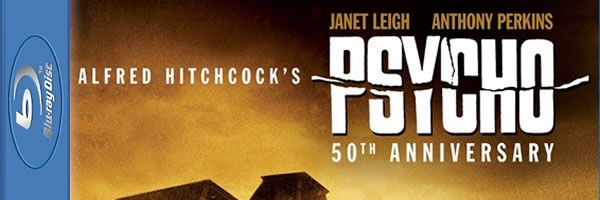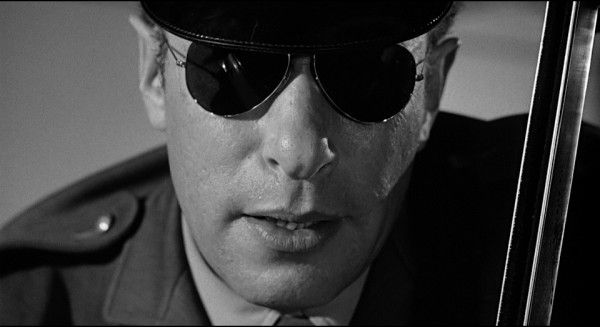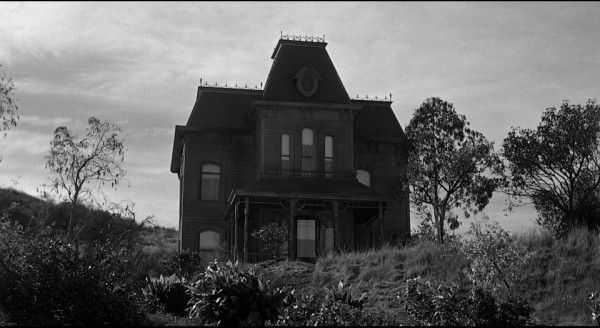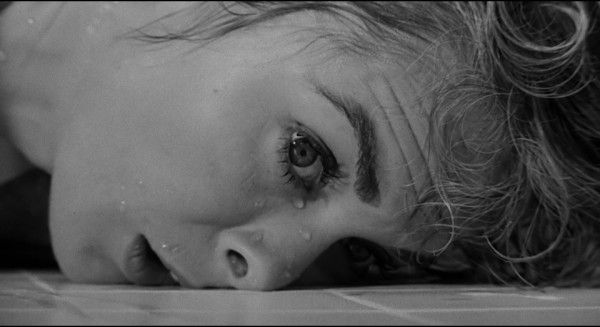When the Lumiere brothers made “Arrival of a Train at La Ciotat” in 1896, audiences famously left the theater, afraid that a silent train might kill them. At least, that’s what the history books tell us. For modern audiences, a shot of a silent train in black and white would have no such weight. Such is partially the dilemma of Alfred Hitchcock’s Psycho. On one hand it was the master at his subversive and transgressive best, on the other hand so much has changed in fifty years of cinema that it’s virtually impossible for an audience to find the film without knowing the big reveal or having a familiarity with its set pieces - if only from the pop culture unconsciousness. The shower scene from Psycho is so well known that it’s possible some people know it only from the parodies (done by The Simpsons, Jackass, etc.). In Psycho, Janet Leigh plays Marion Crane, a woman who steals money from work and spends a night at the Bates Motel as run by the troubled mother’s boy Norman Bates (Anthony Perkins). Regardless of whether you know what’s waiting for you in the fruit cellar, Psycho is still a great film - at least it is once it’s removed from the amber it’s been encased in. My review of Psycho on Blu-ray after the jump.
Janet Leigh stars Marion Crane, a single woman conducting a sexual relationship with Sam Loomis (John Gavin) on her lunch hour. When she heads back to the office, a rich man offers a down payment on a home for his daughter in cash ($40,000) and Marion is tasked with taking it to the bank. As her relationship and life seem to be going nowhere, she impulsively steals the money to give it to her boyfriend and start a new life. But on the road her doubts and fears ring out, and when she’s stopped by a cop, she freaks out and sells her car.
After hitting the road for too long (and on a dark and stormy night) she stops at the Bates Motel, where she is the only client. Norman Bates (Anthony Perkins) runs the hotel with his mother (Virginia Gregg), and he offers Marion some food, and while she eats the two talk about their lives. He feels trapped, and she plans on going home and returning the money in the morning, only to be violently murdered by Mrs. Bates. Sam and Marion’s sister Lila (Vera Miles) are concerned about her disappearance, and there’s also a private investigator, Detective Milton Arbogast (Martin Balsam) who’s looking for the money. But all the answers lie in The Bates Motel.
Reviewing Psycho is difficult in the sense that the film has been spoiled, parodied and recycled ad infinitum, and as such there can be something of a disappointing reaction to seeing the film for the first time. The problem with transgression is that when Hitchcock opened the doors he did with this film, cinema was forever altered, but all that followed dampened the impact of what he did. Psycho is still shocking – it was re-rated R after the fact – but compared to the more recent R rated examples like Hostel, it’s going to be harder for the film to provoke an audience that has seen much, much worse.
But the film works, and it amazingly efficient as it has such an interesting bifurcated structure. The film gives you one protagonist with a complicated morality and then replaces it with Norman, who also has a complicated morality - though there the picture keeps its distance from him (the film enters Marion’s headspace, but rarely Norman’s). He is tasked with cleaning up the mess, and there Hitchcock gets to exploit a key tenet of mysteries, in that we want to see whomever did it get away with it. During a classic sequence, Norman sinks a car in a nearby swamp. The car stalls as it sinks, and the audience takes a breath. In doing so, Hitchcock makes the viewer complicit.
It’s also interesting to watch the film while trying to understand the context of viewers at the time. The flushing of a toilet, seeing a leading actress in a bra, or starting the film with pre-marital sex are things that are more common-place these days. But at the time, it must have made some of the audience uncomfortable. And perhaps some members of the audience wanted to see Marion punished for stealing and having pre-marital sex, but what Hitchcock does few who followed his lead understood w/r/t killing sexually active characters, because the punishment for her transgressions is so impactful that it doesn’t seem warranted. The problem with later films that are comfortable killing teens after they’ve shown some skin is that their murders feel weightless in comparison. There is little horror or revulsion at the thought of those deaths because the audience likely came to the theater to see inventive kills. And those murder set pieces are thrilling, but not horrifically so. Hitchcock is a master at pacing, and the quick cuts in the shower scene not only simulate seeing more than is on screen, but function as a form of violence itself in terms of what has come before.
The craft on display is pure elegance, but it’s as if the most gifted prodigy of the day was performing Sex Pistols. That’s part and parcel with the brilliance of this film, which is one of the rare great films that obviously changed how movies were made.
The film is presented widescreen (1.78:1) and in both the original mono mix, and a new 5.1 DTS-HD surround track that sounds very modern – for better or ill. But the picture quality is excellent, and the film pops off the screen. Universal’s Blu-ray includes all previous supplements, starting with the commentary by Hitchcock and Psycho scholar Stephen Rebello, and it’s a tight informative track. There’s a making of (94 min.) which talks to then surviving cast and crew (like Janet Leigh and screenwriter Joseph Stefano), and was put together by Laurent Bouzereau - who is in his wheelhouse doing stuff like this. Though you’re mostly dealing with older people in terms of the interview (besides someone like Clive Barker, who offers his thoughts on the film), it’s a very solid piece, though nothing too gossipy. New is “Psycho Sound” (10 min.) about the new surround remix, while “In the Master’s Shadow: Hitchcock’s Legacy” has people like Martin Scorsese, John Carpenter, William Friedkin, Guillermo Del Toro, Mark Goldblatt, Eli Roth and many more talking about the master’s influence. Also included is Francois Truffaut’s interview with Hitchcock for their famous book together (15 min.), Newsreel footage on the release (8 min.), a featurette on the shower scene (3 min.) showing the sequence with and without music, Saul Bass’s storyboards for the sequence (4 min.), a still gallery (8 min.), a poster and ad gallery (3 min.), lobby cards (2 min.) , Behind the Scenes (8 min.) and production photographs (9 min.), the theatrical trailer, and five re-release trailers (though all seem to be TV spots).




